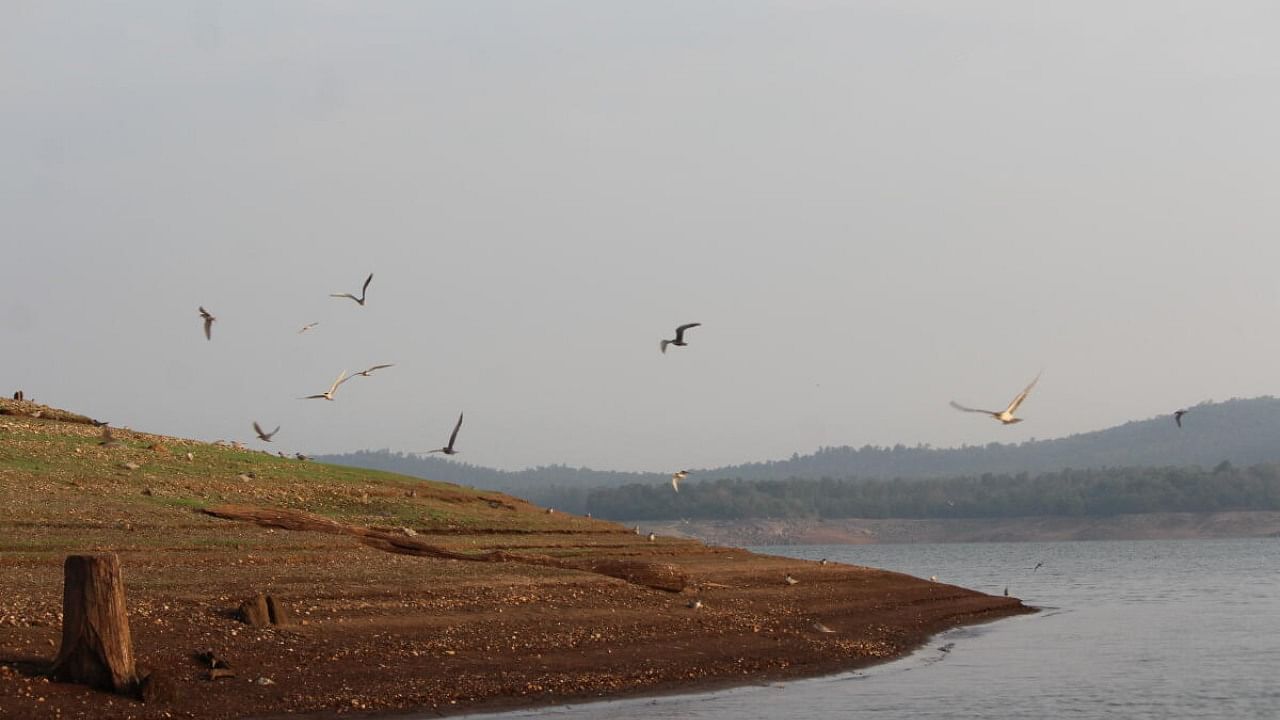

As the water level of the Bhadra Reservoir falls, rocky islands are exposed, setting the stage for an annual spectacle. Come March, a few of these islands become some of the largest breeding grounds for the Indian river terns. The adult river tern is a colourful bird with a jet-black cap on the head, a yellow beak, a grey and white body and orange legs.
Thousands of these birds descend on the islands, making it their love nest. The breeding season lasts from February to May and the little chicks learn to fly just as the monsoon rains start submerging the islands.
Around February, the birds fly in from the foothills of the Himalayas to two particular islands in the backwaters of the reservoir in February and March. The male terns court the females by bringing them fish.
Also Read | 86% of global population affected by subglobal climate change
If impressed, the female accepts the male’s advances and they mate. Each female lays about three to four eggs in a hollow in the ground. The parents take turns incubating them for a period of three weeks.
The other bird in the pair flies out to catch fish.
While the birds are colourful, the chicks are quite plain and have a grey, speckled body which makes for easy camouflage among the rocks. A boat safari is the best way to observe this magnificent sight.
I was there along with my companions in May, which is a good time to see the hatched chicks being fed. In a matter of a few minutes, you can see the parents flying out, catching fish, bringing them back to the island, moistening the fish to make it easier for the chick to eat, feeding and then flying out again to repeat this cycle.
It is remarkable how the parents manage to find the right chick, considering the entire island is dotted with similar-looking baby terns! It is also fascinating to watch the river terns catch fish in one quick swoop.
And if you look closely, you can spot some of the older chicks trying to reach the water for a drink or attempting to fly. You may even see a few fail and stumble and roll instead! Closer to the banks of the islands, the adult terns can be seen flapping around the water, taking a bath.
Survival
The terns choose these islands as their breeding grounds as they are safe from land predators with the added benefits of freshwater and a continuous supply of fish. The islands are, however, not safe from eagles, kites and snakes.
The lack of shrubbery and tree cover makes it so that the chicks are vulnerable not only to predatory birds but also to unseasonal rains and the harsh sun.
Despite the parents’ best efforts to feed and protect them, only a fraction of the chicks survive to make the journey back to the north. There is also a strict deadline for the young ones to learn to fly as the monsoon rains replenish the dark waters of the Bhadra and the water levels of the reservoir rise thereby submerging the islands.
The Bhadra Wildlife Sanctuary and Tiger Reserve surrounding the backwaters is a lush forest with a wide variety of animal and plant species. Summer is also a good time to go on a jeep safari that will take you into the forest. The otherwise dense forest is dry making it easier to spot the many wild animals and the 200 or so varieties of birds.
Our safari guide told us, the reservoir and the surrounding forests are a treasure trove and have something new to offer in every season.
The Bhadra Wildlife Sanctuary is located about 300 km from Bengaluru. The forest department organises boat and jeep safaris twice a day.